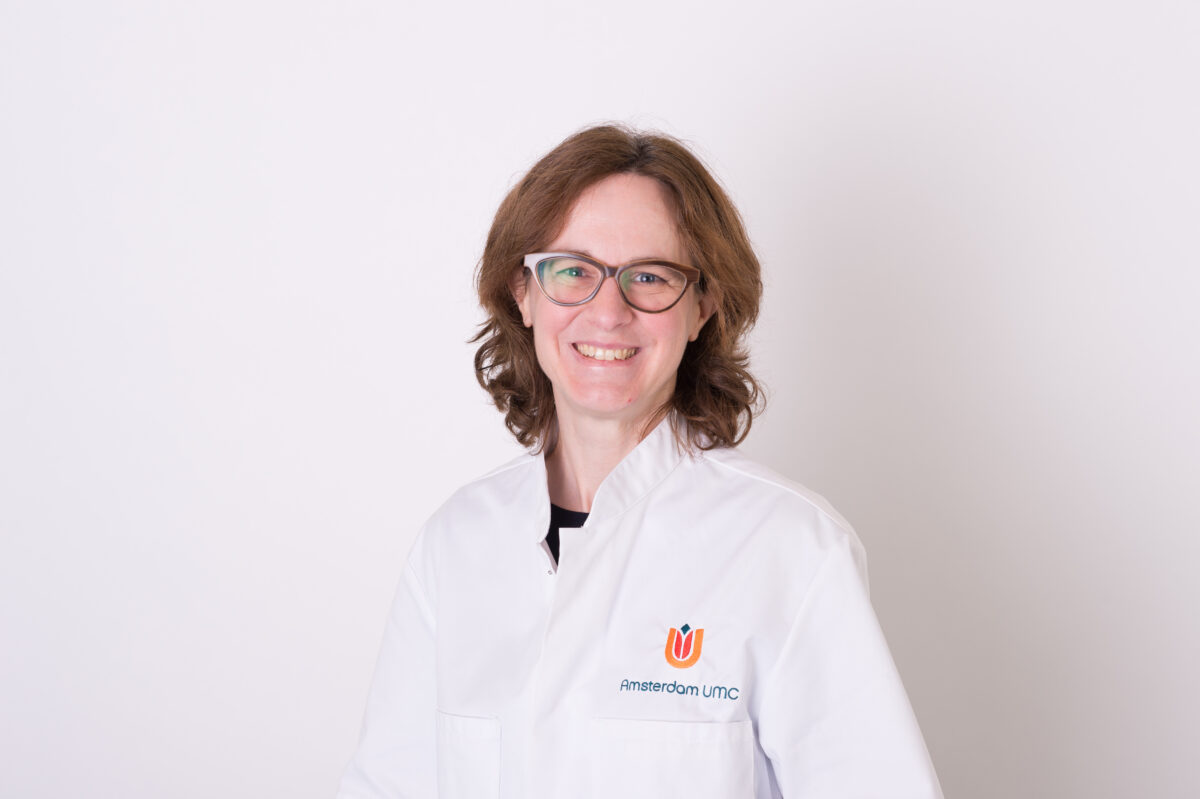In this edition of “Meet the members”, we interview Nicole Wolf, pediatric neurologist in the department of child neurology in Emma Children’s Hospital/Amsterdam University Medical Centers, the Netherlands. She will tell us a bit more about her work in the hospital, within ERN-RND and her expectations for the network.
1. What is your profession (department, affiliation, etc.) and your medical expertise or specific field of interest/why?
Since 2008, I work as a child neurologist in the Amsterdam Leukodystrophy Center (ALC), which is part of the department of child neurology in Emma Children’s Hospital/Amsterdam University Medical Centers. The ALC is dedicated to children and adults with leukodystrophies, and the 5 (child) neurologists see patients with those disorders from all over the world. My training in paediatrics and child neurology took place in Heidelberg and Zuerich. From the very first year at university, it my dream to become a child neurologist because you need to interpret everything on the background on a child’s development, and there is so much to see and to deduce already when observing a child. At the very start of my training, in 1999, I became interested in leukodystrophies and neurometabolic disorders, and began to follow children with these conditions. Within the ALC, my focus is on metachromatic leukodystrophy and hypomyelinating leukodystrophies, from diagnosis to treatment.
2. What do you like most about your work and what is the biggest challenge specially in regards to working on rare diseases?
There are only few things in my work I do not like. Following patients for many years and trying to find the best form of tailored treatment is rewarding, and I keep being impressed by the resilience and positive attitude of many patients and families. Working in an interdisciplinary team, covering the whole range from elucidating disease mechanisms to designing a clinical trial is always stimulating. Although good curative treatment options are only available for selected patients, there is clear progress, and to be able to participate in or to set up clinical trials is one of the most fulfilling things I can imagine.
The biggest challenge regarding rare diseases is that those diseases are rare, meaning considerable efforts to find enough patients to answer research questions with confidence. Often, we do not have good systems for example to describe severity of a disease, certainly in young children. On the other side, I very much enjoy the many collaborations needed to make the next step forward, and those collaborations are growing stronger.
3. How do you participate in ERN-RND? Can you tell us about your experience presenting a case via the CPMS?
Together with colleagues from other European centers, I am involved in coordinating the leukodystrophy disease group, and I am part of the ERN-RND management team. Our team gave several webinars, and I like this form of teaching very much because of its accessibility. We discussed a case very recently, and the opinions of colleagues in other centers are always valuable.
4. What are your expectations for the network?
That this network is the (virtual) place to go for patients and physicians from all over Europe when diagnosed with a leukodystrophy, to find advice and to participate in studies. And that it facilitates collaborations between different centers.
5. How do you think patients and clinicians can work together/why do you think it is important?
Patients and clinicians need to work as a team. Both depend on each other to achieve progress. Patients and families need to know as much as possible about “their” disorder, and doctors need to closely listen to their patients to understand their needs.
You are an ERN-RND full member or affiliated partner and would like to participate? Please contact us.

